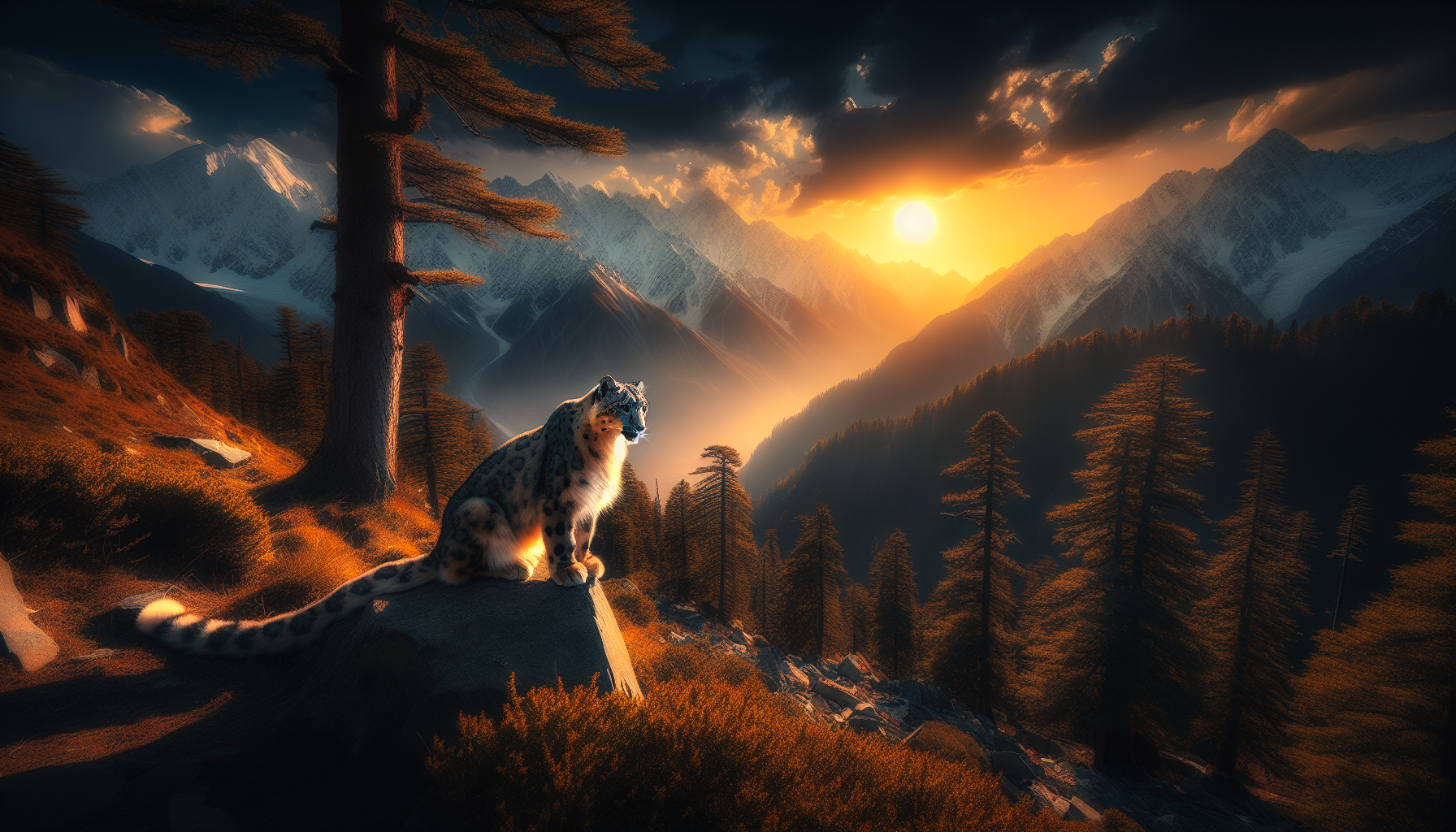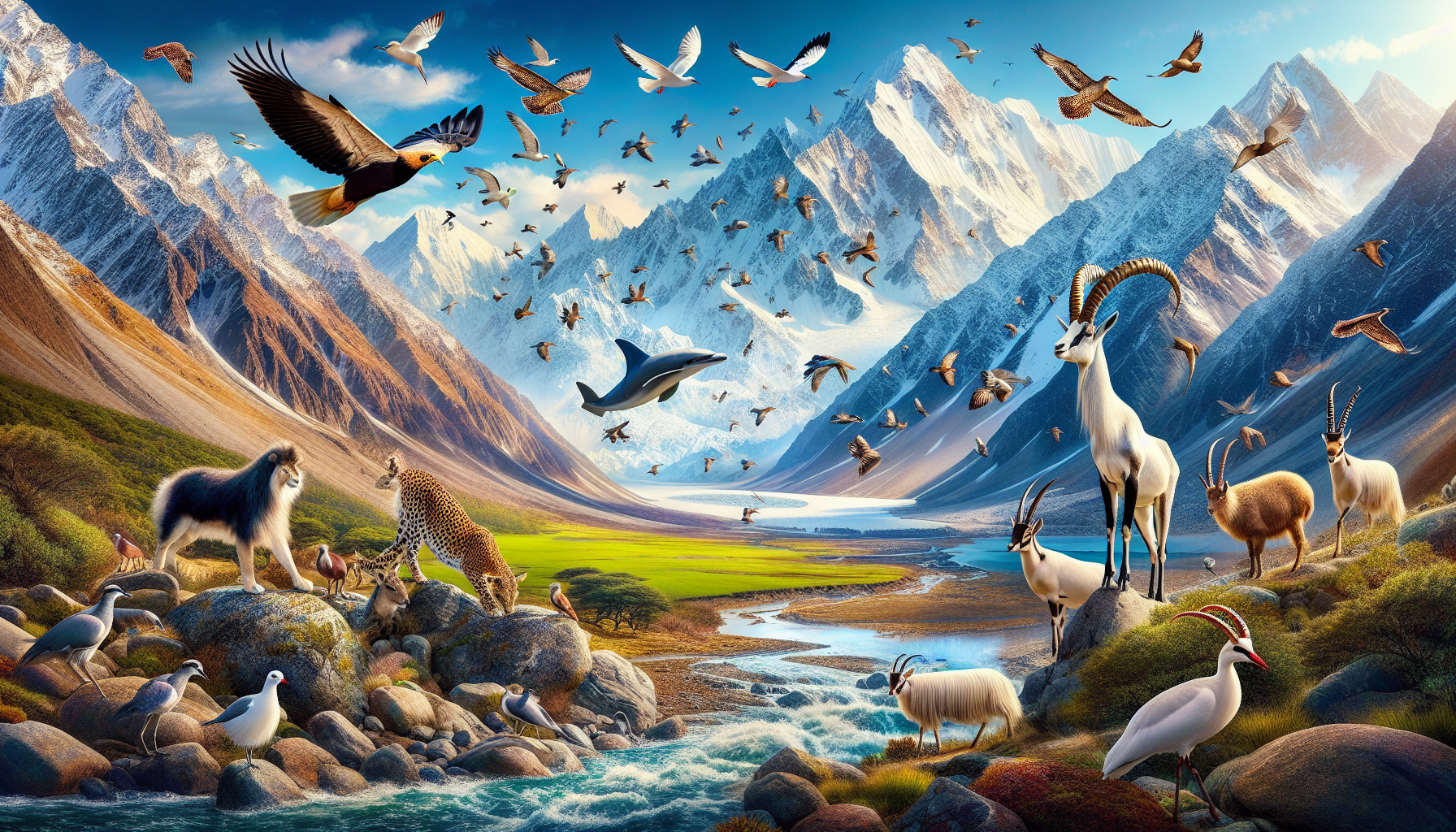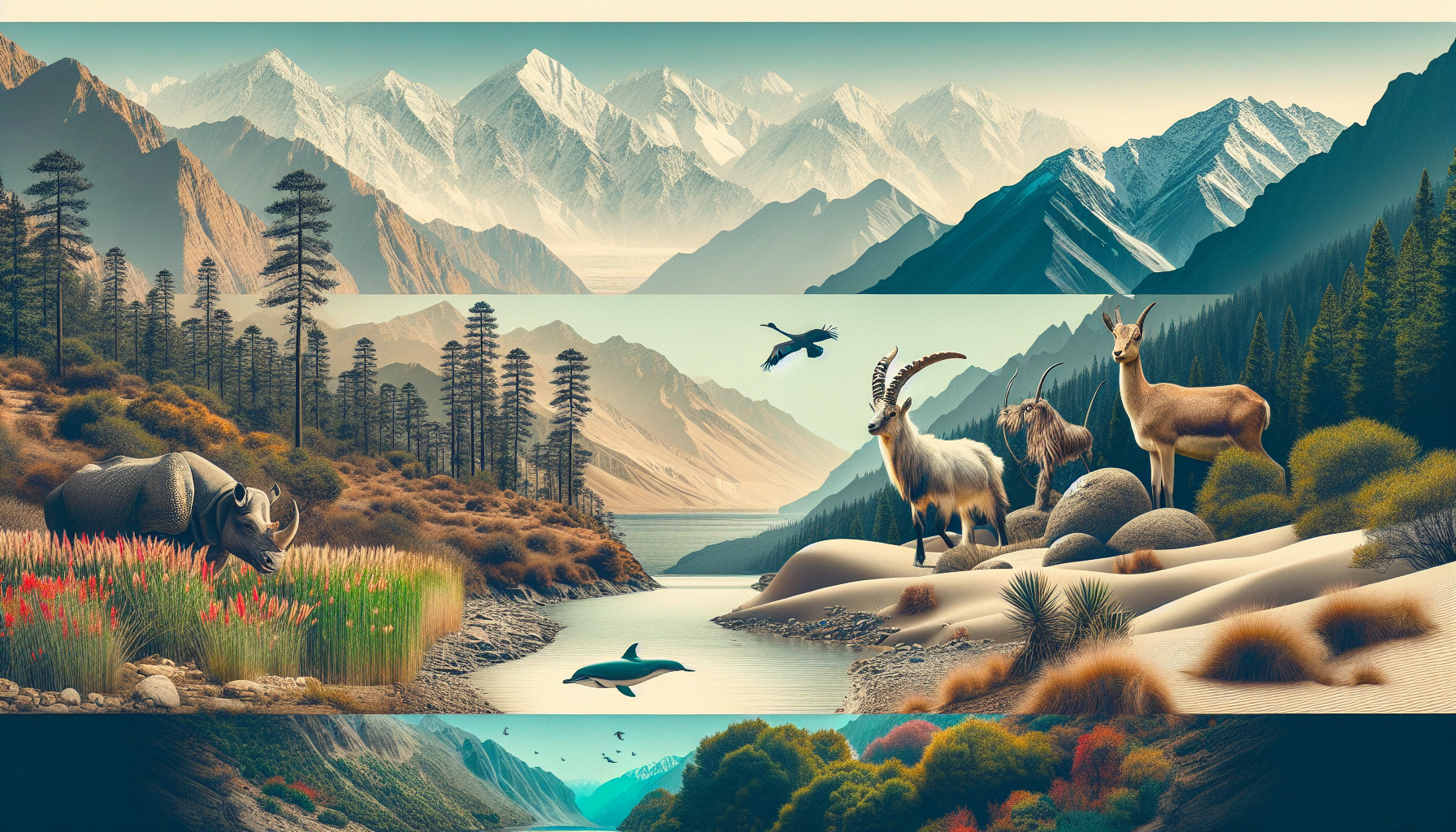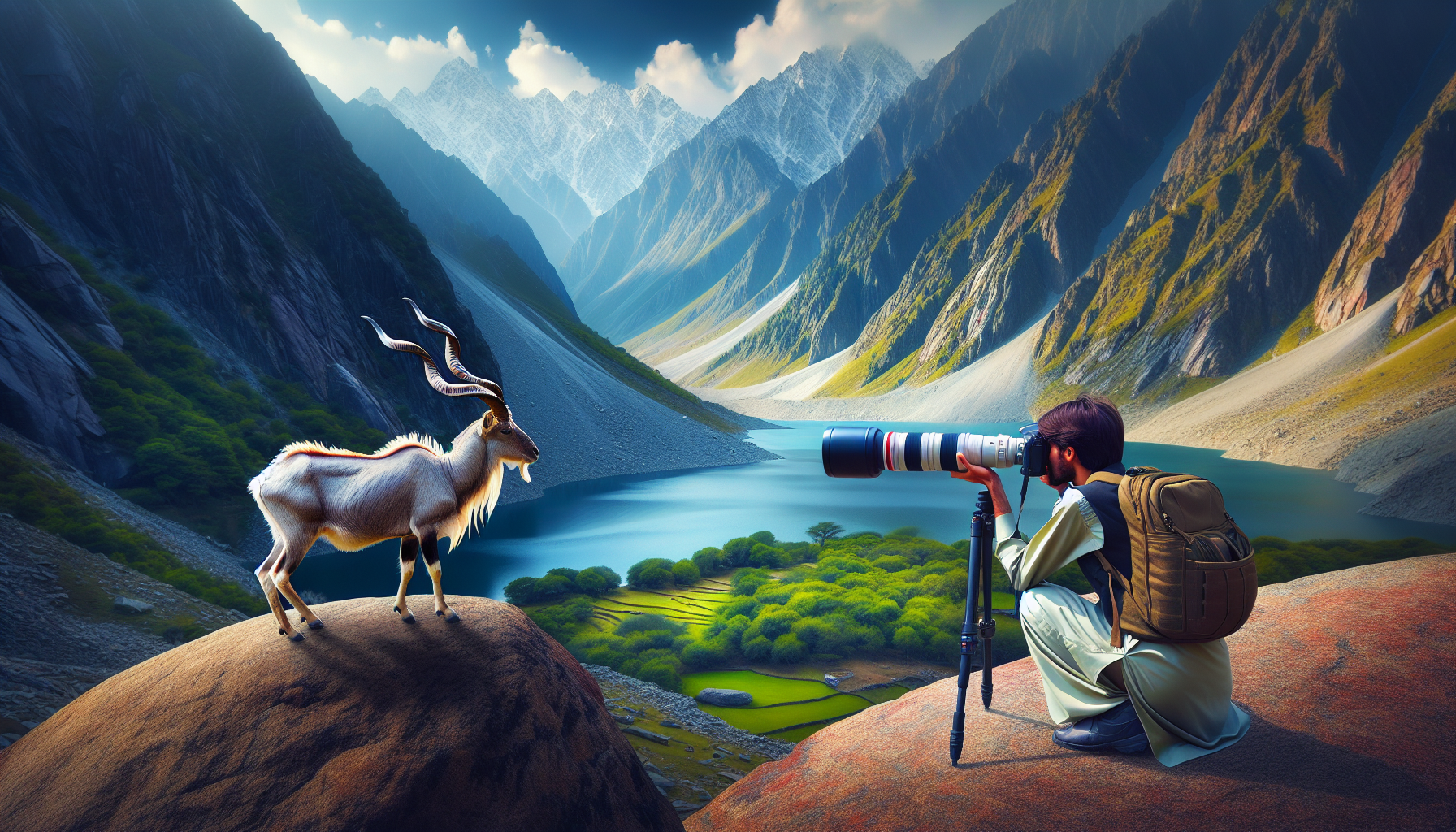Welcome to the beginning of your journey with The Ultimate Guide to Wildlife Photography in Pakistan: Master Nature’s Beauty. Pakistan is truly a hidden gem for wildlife photography enthusiasts. From the majestic snow leopards of the Karakoram Range to the vibrant bird species in the wetlands of Sindh, the diversity is staggering.
My recent trip to the Deosai National Park, often called the ‘Land of Giants’, was breathtaking. The sight of a Himalayan brown bear against the backdrop of rolling plains was unforgettable. Pakistan’s varied landscapes provide a rich canvas for capturing unique moments.
Local initiatives like the Pakistan Wildlife Foundation offer invaluable resources for responsible photography. Additionally, the WWF-Pakistan works tirelessly to preserve these ecosystems. Meeting the challenges of remote photography is easier with guidance from local photographers who understand these terrains. Embrace the adventure and discover the untapped beauty of Pakistan’s wilderness!
Essential Gear for Wildlife Photography in Pakistan
When embarking on the journey to capture nature’s beauty in Pakistan, having the right gear is essential. From the majestic snow leopards in the north to the vibrant birds in the south, each encounter is unique. As a seasoned photographer, I’ve learned a few invaluable lessons while trekking through Pakistan’s diverse landscapes.
Must-Have Equipment for Capturing Nature’s Beauty
First and foremost, a reliable camera is a must. I recommend a DSLR or mirrorless camera with a fast shutter speed. This ensures you don’t miss those fleeting moments. For lenses, a telephoto lens is crucial for capturing wildlife from a distance without disturbing them. I always carry a 70-200mm lens, which strikes a great balance between reach and portability.
Don’t overlook the importance of a sturdy tripod. Especially when photographing in low light or using a long lens, stability is key. When I was photographing the migratory birds at Haleji Lake, a tripod made all the difference in getting sharp images.
Accessories and Local Insights
Filters like polarizers can reduce glare and enhance colors. They are particularly useful in the sunny deserts of Tharparkar. A remote shutter release is another handy tool for minimizing camera shake. Investing in weather-sealed gear is wise, given Pakistan’s varied climates.
Additionally, I recommend connecting with local wildlife experts or groups like WWF Pakistan or Pakistan Wildlife Foundation. They offer insights and sometimes access to otherwise restricted areas. Always respect local guidelines and wildlife protocols.
Whether you’re a beginner or a seasoned pro, capturing rare species and scenic landscapes in Pakistan is an unforgettable experience. With the right gear, you’re well on your way to creating stunning images that tell a story.
The Ultimate Guide to Wildlife Photography in Pakistan: Master Nature's Beauty with Expert Tips

Capturing the breathtaking landscapes and diverse wildlife of Pakistan is a rewarding experience for any photographer. From the majestic peaks of the Karakoram to the lush valleys of Swat, each region offers unique opportunities to hone your skills and create stunning images.
Embrace the Diversity of Pakistan’s Wildlife
Pakistan is home to some rare and magnificent species, such as the snow leopard and the Himalayan brown bear. To photograph these elusive animals, consider visiting national parks like Khunjerab or Deosai. These parks not only provide stunning backdrops but also increase your chances of spotting these creatures in their natural habitat. The Pakistan Wildlife Foundation can offer valuable insights into the best times and locations for wildlife photography.
Equip Yourself with the Right Tools
Choosing the right gear is crucial for capturing nature’s beauty. A camera with a high frame rate is ideal for wildlife photography, allowing you to capture fast-moving subjects with precision. Consider investing in a telephoto lens to photograph animals from a safe distance without disturbing them.
For landscape photography, a wide-angle lens is indispensable. It helps you capture the grandeur of Pakistan’s scenic vistas. Don’t forget to carry a sturdy tripod; it stabilizes your camera, especially in low-light conditions. Platforms like the Pakistan Photographers Network offer forums where you can exchange gear tips and recommendations.
Lastly, be patient and respectful of the environment. Wildlife photography often requires long hours of waiting, but the results are worth it. A report by Dawn highlights the importance of conservation efforts in preserving these natural habitats. By practicing ethical photography, you contribute to these efforts and ensure that future generations can also enjoy Pakistan’s wild wonders.
Top Locations for Wildlife Photography in Pakistan: Discovering Nature's Beauty

Exploring Pakistan’s diverse landscapes is a wildlife photographer’s dream. Each region offers unique opportunities to capture nature at its finest. Here are some top locations where I’ve personally experienced the thrill of wildlife photography.
Unearth the Magic of Khunjerab National Park
Khunjerab National Park is a must-visit for those seeking to photograph majestic creatures in their natural habitat. Located in the Gilgit-Baltistan region, this park is home to the elusive snow leopard. On my first visit, I was fortunate enough to spot this magnificent creature, stealthily navigating the rugged terrain. Besides snow leopards, you can also capture images of Himalayan ibex and Marco Polo sheep. Remember to pack a telephoto lens to capture these animals from a safe distance.
Enchanting Wildlife at Hingol National Park
Travel south to Balochistan and discover Hingol National Park. This park is a treasure trove of biodiversity. I vividly recall the sight of the graceful ibex scaling the rocky cliffs. The park also houses the endangered Indian wolf and the rare pangolin. The stark desert landscape against the azure waters of the Hingol River offers a perfect backdrop for dramatic shots.
For those passionate about bird photography, the wetlands around the Indus River are ideal. The area attracts migratory birds, including flamingos and pelicans. The vibrant colors and the sheer number of species make this region a birdwatcher’s paradise. Organizations like `WWF-Pakistan` and `Pakistan Wildlife Foundation` offer valuable resources for budding photographers. Their guided tours provide insights into the best times and spots for photography.
Embark on this journey through Pakistan’s natural wonders and let your lens capture the beauty that awaits. Whether you’re a seasoned photographer or a beginner, these locations offer endless inspiration.
The Ultimate Guide to Wildlife Photography in Pakistan: Mastering Techniques for Capturing Stunning Images

Embarking on a journey to master nature’s beauty through wildlife photography in Pakistan can be both thrilling and rewarding. With diverse landscapes and rare species, it’s essential to hone your techniques to capture breathtaking images. Here’s how you can do it.
Perfecting Your Craft in the Wild
While exploring the majestic mountains of the north or the lush green forests of Sindh, always keep your camera ready. The golden hour, just after sunrise or before sunset, offers the best lighting conditions. I remember capturing a stunning shot of a Markhor in the Chitral Valley during this time. The soft, diffused light highlighted its spiral horns beautifully.
Understanding animal behavior is crucial. Spending time observing your subject can yield better results. On one of my trips to the Hingol National Park, patience paid off when I captured a rare glimpse of the elusive leopard. A few tips include:
- Stay quiet and maintain a respectful distance.
- Use a telephoto lens for close-up shots without disturbing the wildlife.
- Learn the art of camouflage to blend in with the surroundings.
Utilizing Local Resources for Success
Pursue knowledge from local organizations like the Pakistan Wildlife Foundation or workshops by National Geographic Society. These resources offer invaluable insights. I once attended a workshop by WWF Pakistan that transformed my approach to capturing the vibrant hues of the Indus River dolphins.
With these tips, you’re well on your way to capturing the breathtaking beauty of Pakistan’s wildlife. Remember, the key is persistence and respect for nature. Happy shooting!
Wildlife Photography Etiquette: Respecting Nature and Wildlife
As a passionate wildlife photographer exploring Pakistan’s incredible landscapes, I’ve learned that respecting nature is key. Whether you’re capturing the snow leopards of Chitral or the migratory birds at Haleji Lake, following proper etiquette is crucial. This isn’t just about getting the perfect shot; it’s about preserving the environment for future generations. In this section of The Ultimate Guide to Wildlife Photography in Pakistan: Master Nature’s Beauty, we’ll delve into some essential practices.
Embrace Ethical Wildlife Photography
One of the most important lessons I’ve learned is to keep a respectful distance from wildlife. It’s tempting to get closer for that perfect frame, but doing so can disturb the animals. Use a zoom lens to capture close-up shots without intruding. Remember, your safety and the animal’s comfort should always come first.
During a trip to the vast Thar Desert, I witnessed photographers inadvertently trampling over delicate plant life. This not only damages the ecosystem but also sets a poor example for others. Stick to designated paths and be mindful of your surroundings. Organizations like WWF Pakistan offer resources on how to minimize your impact on natural habitats.
Practice Patience and Prepare for the Unexpected
Wildlife photography is as much about patience as it is about skill. I recall spending hours waiting for the perfect shot of a Markhor in the rugged terrains of the Hindu Kush. It’s a test of endurance and respect for the natural pace of wildlife. Make sure your gear is ready, and always have a backup plan for unforeseen circumstances.
Lastly, consider sharing your photos with organizations that focus on conservation, such as Pakistan Wildlife Foundation. Your work can help raise awareness and contribute to the protection of these magnificent creatures. By following these guidelines, you not only enhance your photography but also support the preservation of Pakistan’s rich natural heritage.
Conclusion
As we wrap up this guide on mastering nature’s beauty in Pakistan through wildlife photography, I can’t help but reminisce about my own adventures across this stunning landscape. Each trip has been a new chapter, filled with breathtaking scenes and encounters with the country’s diverse wildlife.
Embrace the Adventure
Embarking on a wildlife photography journey in Pakistan is not just about capturing rare species. It’s about immersing yourself in the experience. I remember my first trip to the Khunjerab National Park. The anticipation of spotting a snow leopard made every photo a potential masterpiece. The thrill of adventure is always present, whether you’re exploring the mangroves of the Indus Delta or the scrub forests of Potohar Plateau.
Connecting with Local Resources
For those seeking guidance, numerous local resources can offer invaluable support. The Pakistan Wildlife Foundation provides useful insights into conservation efforts. Meanwhile, the WWF-Pakistan offers workshops and seminars that can enhance your skills. Engaging with these organizations can deepen your appreciation and understanding of the local ecosystem.
On a more personal note, nothing compares to the satisfaction of capturing that perfect shot after hours of patience. Some of my favorite memories include photographing the elusive Punjab Urial in the Salt Range and the magnificent birds of the Chitral Valley. These experiences have not only enriched my portfolio but have also fostered a deeper connection with Pakistan’s natural heritage.
In conclusion, wildlife photography in Pakistan offers endless opportunities for adventure and discovery. With a keen eye and a spirit of exploration, you too can uncover the hidden gems of this beautiful country.
Frequently Asked Questions
What are the best locations for wildlife photography in Pakistan to capture rare species?
Pakistan offers a variety of locations for wildlife photography, each with its unique species and landscapes. The Khunjerab National Park is renowned for its snow leopards and ibex, while the Deosai National Park is home to the Himalayan brown bear. The Hingol National Park, on the other hand, offers a chance to photograph diverse wildlife like the Indian wolf and chinkara gazelle. Each location provides opportunities to capture rare species in their natural habitats.
When is the best time of year to visit Pakistan for wildlife photography to see diverse flora and fauna?
The optimal time for wildlife photography in Pakistan varies depending on the region and the species you aim to capture. Generally, spring (March to May) and autumn (September to November) offer the best weather conditions and a chance to witness a variety of species as they are more active during these temperate seasons. For snow leopards in the northern regions, winter months can also be rewarding as these elusive creatures descend to lower altitudes.
What essential gear and equipment should I bring for a successful wildlife photography trip in Pakistan?
For a successful wildlife photography trip in Pakistan, it’s important to bring the right gear. A DSLR or mirrorless camera with a telephoto lens (200mm or more) is essential for capturing distant wildlife. A sturdy tripod ensures stability for long shoots and low-light conditions. Binoculars, weather-resistant clothing, and a backpack for carrying your gear are also recommended. Additionally, carrying extra batteries and memory cards is crucial, as remote locations might not have charging facilities.


Leave a Reply